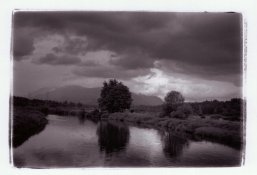If you ain't printing full frame then you are cropping in the darkroom. The vast majority of people don't print full frame so the norm is to crop on the easel. They may only crop a tad so frame edges don't show but that is still cropping.
edit:
When I compose on the easel I always crop for final aesthetic and balance. Sometimes I crop a large portion out or to put it another way, I select a portion of the negative to print. Sometimes by design from the taking stage and sometimes because I see a better crop than I saw at the taking stage. Why impose rules on yourself that are totally un-necessary and limit what you can photograph. I will try and use as much of the negative as the subject allows for at the taking stage but I will leave space around subject if I think it needs it or will allow a better crop in the darkroom.
edit:
When I compose on the easel I always crop for final aesthetic and balance. Sometimes I crop a large portion out or to put it another way, I select a portion of the negative to print. Sometimes by design from the taking stage and sometimes because I see a better crop than I saw at the taking stage. Why impose rules on yourself that are totally un-necessary and limit what you can photograph. I will try and use as much of the negative as the subject allows for at the taking stage but I will leave space around subject if I think it needs it or will allow a better crop in the darkroom.
Last edited by a moderator:














